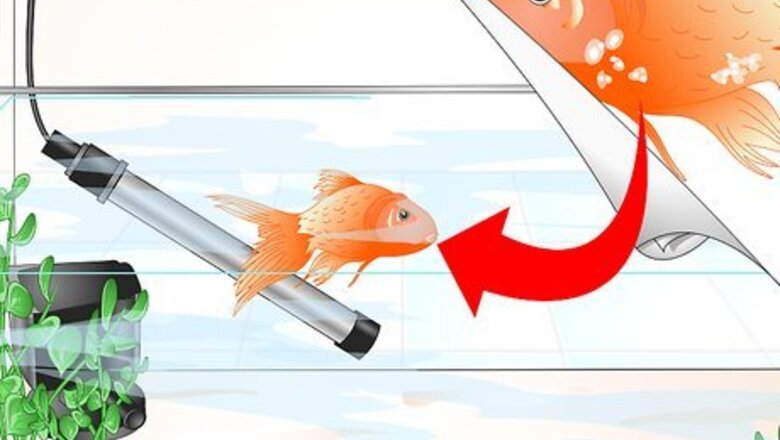
views
X
Research source
Luckily there is a natural remedy and a professional remedy you can use to help your goldfish appear shiny and golden orange again.
Recognizing the Symptoms of Goldfish Ich
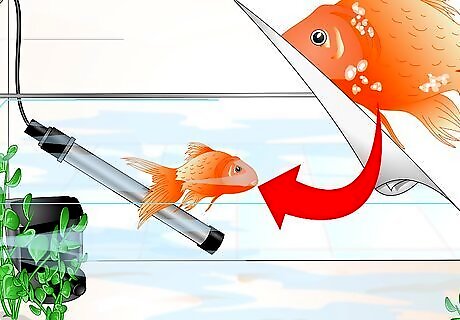
Check for small white spots on your goldfish. Ich parasites may not be very visible when they first start to form. But once they start to feed on the bodily fluids of your fish’s skin and fins, they will encyst themselves and show up as small flecks or white spots. It may look that your goldfish has been dusted with salt or sugar, but in fact, they are suffering from ich. If you don’t notice the ich treatment early, it may develop into large white patches on your fish’s scales and fins. This is a sign more ich parasites have attached to your goldfish.
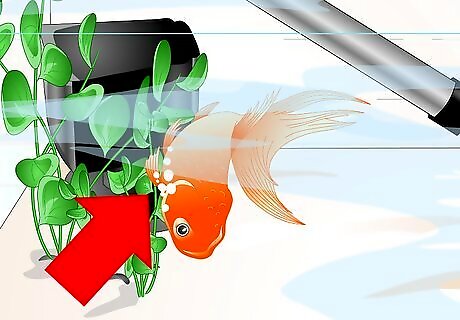
Note if your goldfish is brushing against objects or the sides of the tank. The goldfish ich will cause your goldfish to, well, itch! He may brush his body against objects in the tank or against the sides of the tank in an effort to stop the itch.
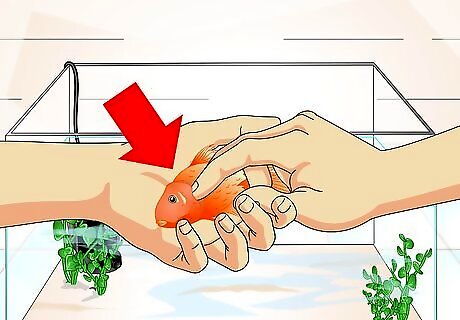
Look at your goldfish’s gills. Because your goldfish is under distress, he may not be getting enough oxygen in the tank. This will cause his gills to go into overdrive and lead to heavy and rapid movement of his gills as he tries to breathe.
Using a Salt Bath
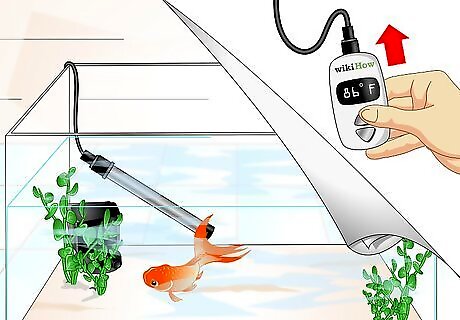
Raise the temperature of your aquarium water to 86 degrees Fahrenheit (30 degrees Celsius). Increase the water temperature slowly over a 48-hour period in small increments of 2 degrees F or 1 degree C every hour. This will give your goldfish time to adjust to the rising temperature and prevent shocking him. The heat will prevent the ich from developing into many more parasites after it detaches from your fish. High temperatures will effectively neutralize the parasites and stop them from reproducing. Do not combine two ich treatments, only do one ich treatment at a time.
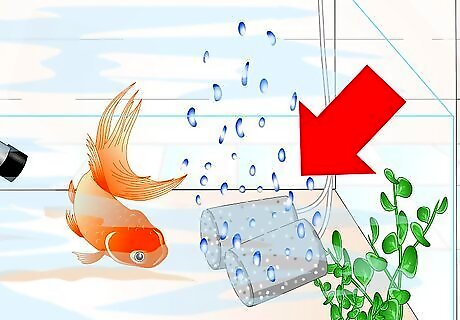
Keep the oxygen levels high in the water. You will need to compensate for raising the water temperature by providing more oxygen in the water for your fish. Do this by: Reducing the water level in the tank. Aiming power heads at the surface of the tank water. Placing extra air stones, or ornaments embedded with air stones, into the tank water.
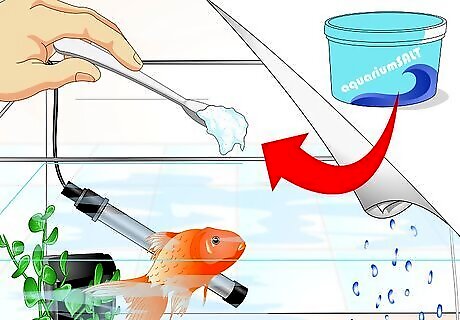
Add aquarium salt to the water. Some aquarium owners argue that raising the temperature of the water in increments is enough to detach and kill the ich. But a salt bath can help your fish develop his slime coat, which will prevent the ich from reattaching to him. The combination of salt and heat will attack any free-swimming ich in the tank until they are all killed off. Only use aquarium salt that is made specifically for freshwater fish, not table salt or any other salt. You can purchase aquarium salt online or at your local pet store. Add one tablespoon or three teaspoons of aquarium salt for every five gallons (19 liters) of tank water. If you want to try using less aquarium salt, you can try one teaspoon per gallon of water instead. If you have other fish or invertebrates in the tank with the infected goldfish, ensure they are not sensitive to salt before adding salt to the water. Some fish cannot handle large doses of salt.
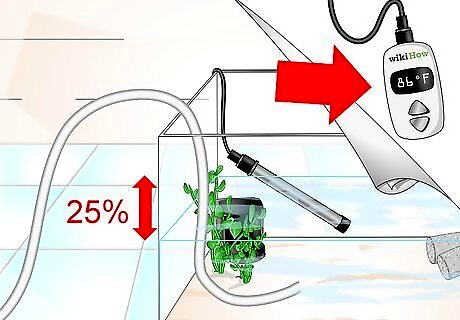
Maintain a high water temperature and change the water every couple of days. Keep the temperature steady at 86 degrees F (30 degrees C) for 10 days. At the beginning of the treatment, when the ich symptoms are very visible on your fish, change 25 percent of the water every two days. This will ensure the water is well oxygenated and help to get rid of any excess parasites. Add the appropriate dose of aquarium salt after each water change. Over 10 days, the signs of ich should decrease on your fish and the tank water will slowly be cleaned of the ich. Continue to maintain the high temperature and add the doses of aquarium salt three to five days after the last signs of ich are gone to ensure all the parasites have been killed.
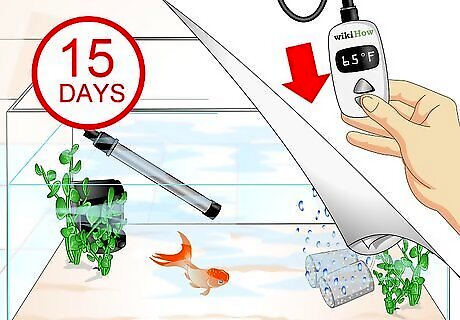
Reduce the water temperature until it’s back to 65 degrees F (18 degrees C). After 15 days of the natural treatment, your goldfish should be swimming normally and white spot free in the tank. It’s now time to bring the water temperature back down to its normal temperature in increments of 2 degrees F (1 degree C) every hour over 48 hours. Do one last 25 percent water change at the end of the natural treatment and then continue your normal weekly water changes.
Using Goldfish Ich Medication
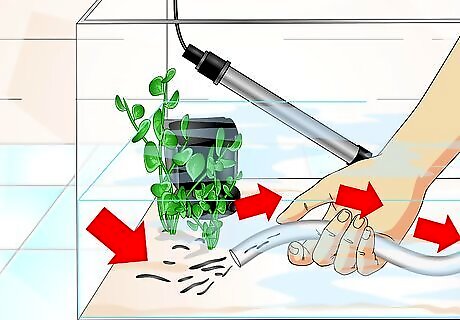
Change 25 percent of the tank water and remove any waste in the tank. Use a water siphon to vacuum the gravel. Then, remove any active carbon for your water filter. Lowering the water level will increase surface agitation of the water and help to circulate the ich medication when you add it to the water. You should also check to make sure the water filter in the tank is pushing a strong, steady flow of water into the tank.
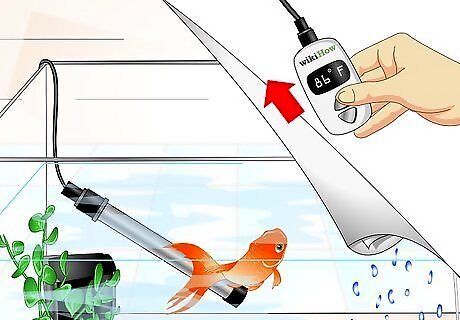
Raise the temperature of your aquarium water to 86 degrees Fahrenheit (30 degrees Celsius). Increase the water temperature slowly over a 48-hour period in small increments of 2 degrees F or 1 degree C every hour. This will give your goldfish time to adjust to the rising temperature and prevent shocking him. Unlike the natural treatment, the purpose of raising the water temperature is not to kill the ich with heat, but to speed up the life cycle of the ich. You are trying to force each parasite to develop into the free-swimming stage very quickly so the ich medication can kill them, without harming your fish.
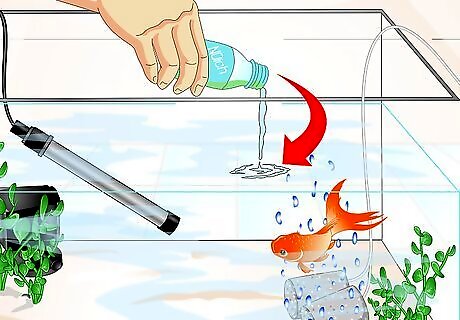
Use ich medication. There are several commercial ich treatments available online or at your local pet store. Some ich medications are copper-based, so they will not stain like some other medications. However, copper-based ich can be harmful to other invertebrates or plants in the infected aquarium. Always read the label of the medication to ensure it will not harm your other aquarium pets. Follow the dosage instructions on the label to apply the ich medication to the tank water.
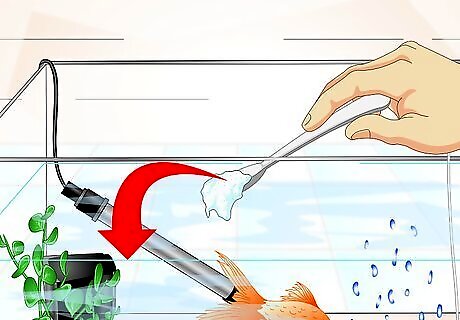
Add salt to the tank water. If you would like to also add salt to the water to boost your goldfish’s slime coat and speed up the killing of the ich, you can do so after you put in the ich medication. Make sure the other fish and invertebrates in the tank are not sensitive to salt treatments. If you are concerned the salt any harm the other fish in the tank, don’t use it. Stick to just the ich medication.
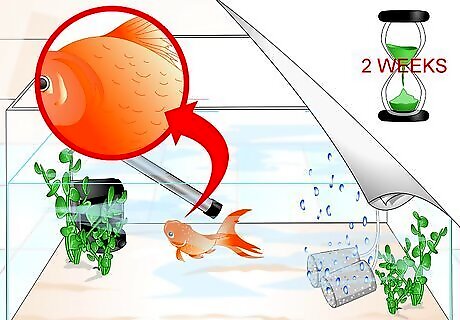
Wait a couple of weeks for the ich to disappear. It may take some time for the ich medication to rid the tank of ich, as each ich parasite needs to be in the free-swimming stage before it can be killed. After a couple of weeks, the white spots on your fish should be gone and the tank should be ich free.
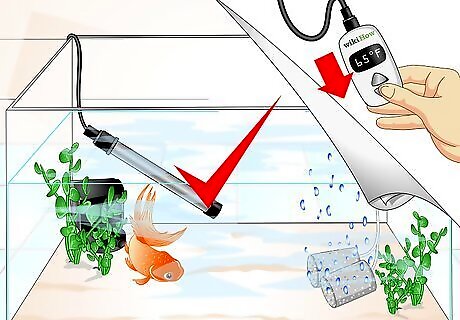
Reduce the water temperature until it’s back to 65 degrees F (18 degrees C). After a couple of weeks of the professional treatment, your goldfish should be swimming normally and white spot free in the tank. It’s now time to bring the water temperature back down to its normal temperature in increments of 2 degrees F (1 degree C) every hour over 48 hours. Do one last 25 percent water change at the end of the natural treatment and then continue your normal weekly water changes.
















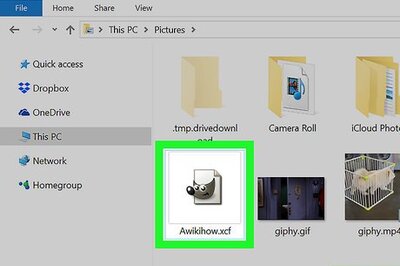

Comments
0 comment